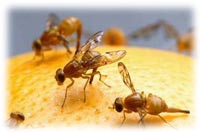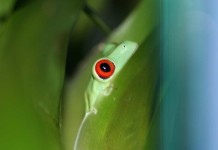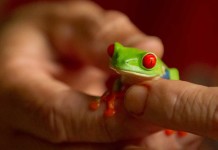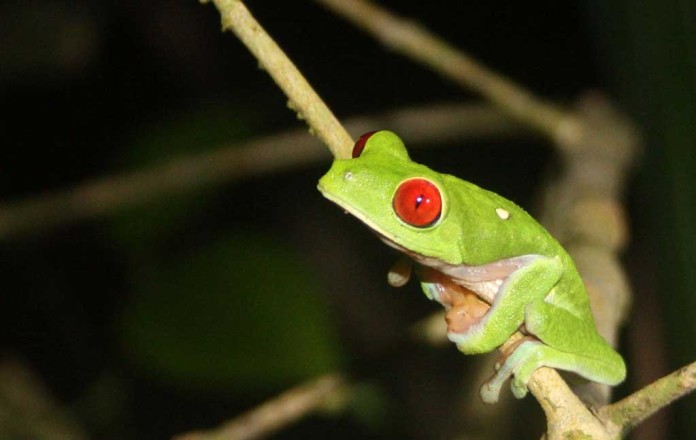The red eyed tree frog diet consists mainly of soft-bodied invertebrates such as crickets, flies, moths, spiders and grasshoppers. They are also known to occasionally consume other frogs. Red eyed tree frog food for the captive amphibian varies only in that you should fortify it with vitamins and minerals and occasional treats. The feeding habits of small frogs vary slightly from that of the adult frog.
Food in the Wild
Red eyed tree frogs consume invertebrates such as crickets, flies and moths in their natural habitat. They prey on these tasty morsels at night, capturing them with their lightning-fast tongue and swallowing them whole. Other food for frogs includes spiders, grasshoppers and the occasional frog.
The froglets of the red eyed tree frog eat smaller, aquatic bugs that skim the surface of the water where they reside until they are mature enough to move up to the forest. They require a more significant amount of food in order to grow.
Food for the Captive Frog
Red eyed tree frog food for a pet frog in captivity will consist mainly of crickets. They can also be fed moths, flies and other flying insects. As an occasional treat for your pet frog, feed them mealworms, wax worms and small silkworms. Place the worms in a small dish for your red eyed tree frog so they won’t burrow into the substrate.
 The adult red-eyed tree frog should be fed three to six food items every other day. Juvenile frogs need more food to grow healthy and should be fed on a daily basis. The red eyed tree frog should be fed at night, preferably right after sunset.
The adult red-eyed tree frog should be fed three to six food items every other day. Juvenile frogs need more food to grow healthy and should be fed on a daily basis. The red eyed tree frog should be fed at night, preferably right after sunset.
To ensure that your frog receives the optimum nutritional value from its food, crickets should be fed fruit and vegetables 12-24 hours before offering them to your frog. You can also purchase a prepared cricket diet at a pet store. About once a week, the crickets should be dusted with a vitamin and mineral supplement. For juvenile frogs, it is best to dust their food for every feeding.
Whether in its natural habitat or in captivity, red eyed tree frog food varies little. They are stealth hunters and are fun to watch when feeding. When feeding in captivity, ensure that they receive the proper amount of food at the frequency they require. Provide them plenty of fresh, clean water as they absorb this through their delicate skin. If fed and watered properly, you can enjoy your pet frog’s unique feeding habits for years to come.












